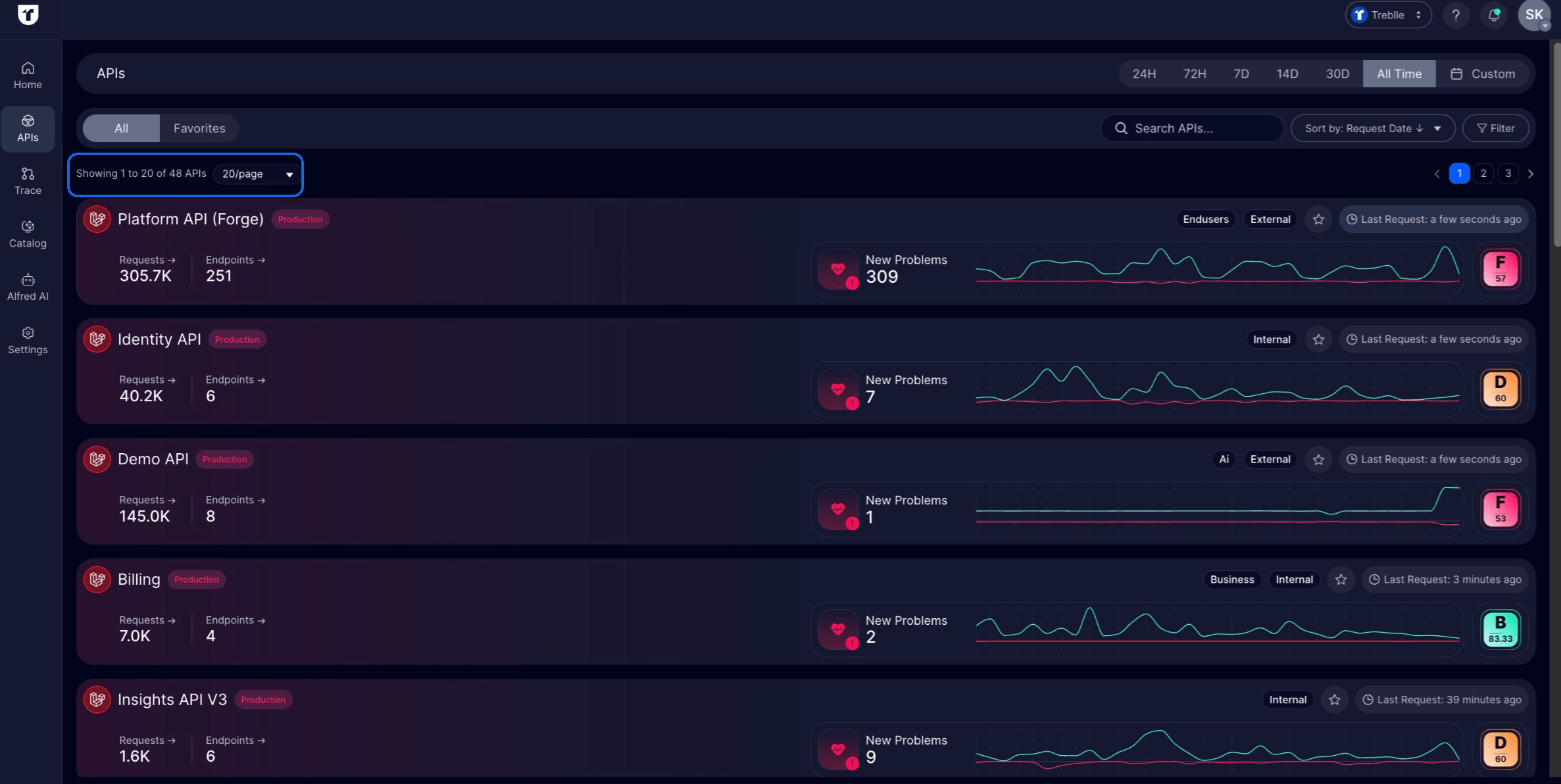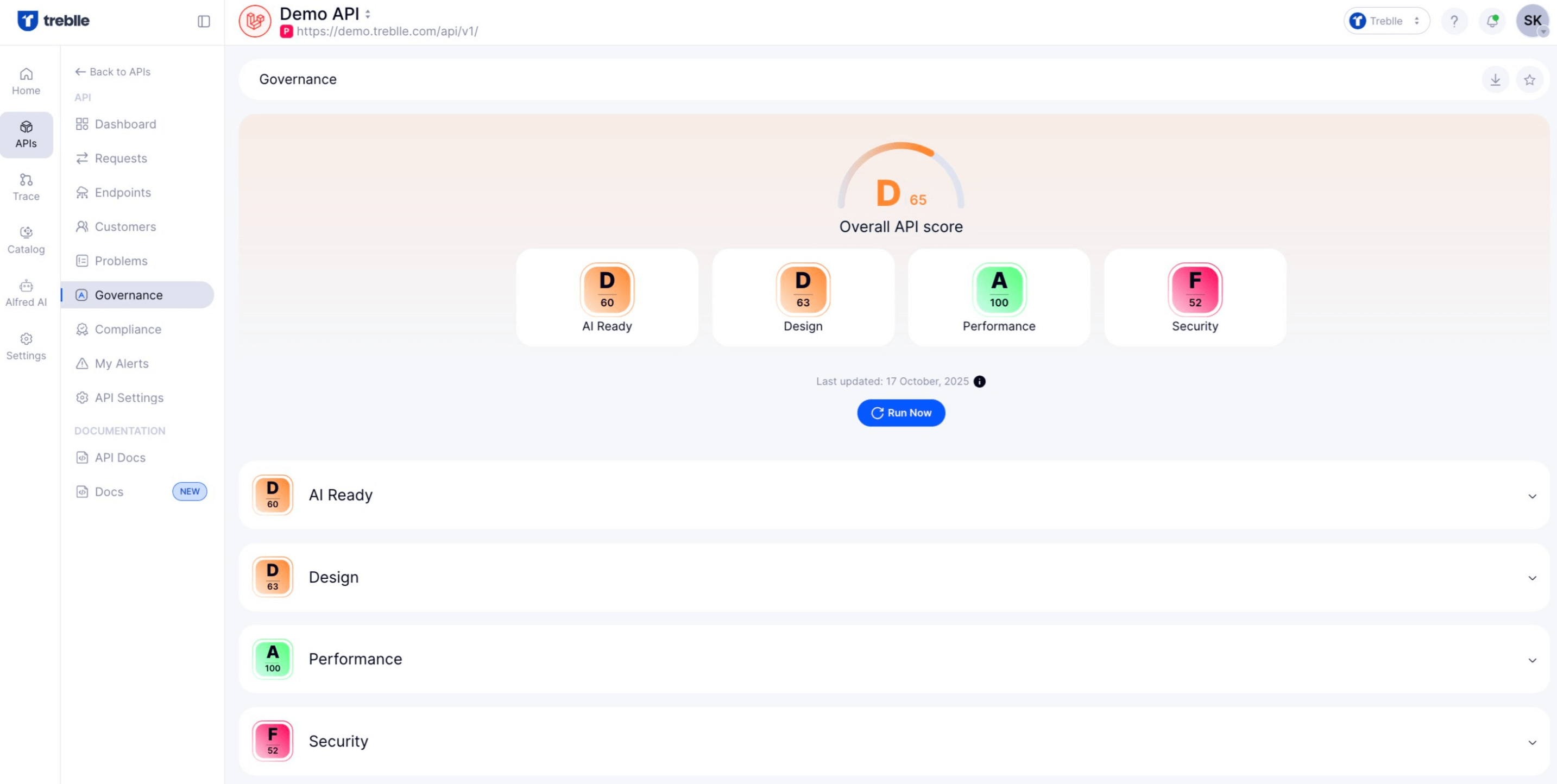API Design | Oct 27, 2025 | 15 min read | By Savan Kharod | Reviewed by Rahul Khinchi

Savan Kharod works on demand generation and content at Treblle, where he focuses on SEO, content strategy, and developer-focused marketing. With a background in engineering and a passion for digital marketing, he combines technical understanding with skills in paid advertising, email marketing, and CRM workflows to drive audience growth and engagement. He actively participates in industry webinars and community sessions to stay current with marketing trends and best practices.
API sprawl is a growing concern for organizations as the number of APIs continues to skyrocket. By 2031, we may see over one billion public and private APIs in use, complicating management and visibility.
This unchecked proliferation leads to shadow APIs, which are often undocumented and unmanaged. These hidden entities can pose significant risks, including security vulnerabilities and operational inefficiencies.
As one Reddit user pointed out, these silent killers can be the root cause of many security breaches, underscoring the need for centralized API inventories to track what’s in use.
Understanding API sprawl and its consequences is essential for effective API governance. With tools like Treblle, teams can gain real-time analytics and actionable insights, making it easier to manage not just visible APIs but also those lurking in the shadows.
Shadow APIs are the sneaky undercurrents of API sprawl, often surfacing without any documentation or oversight. These APIs typically arise when teams create or modify APIs independently, leading to a lack of visibility and control. As a result, they can introduce security vulnerabilities and operational inefficiencies, making them a significant concern for organizations.
The true challenge with shadow APIs lies in their hidden nature. Since they often operate outside formal governance structures, teams may not realize their existence until issues arise, such as security breaches or performance degradation. This lack of awareness can lead to costly consequences, highlighting the importance of implementing robust API management solutions to uncover and monitor these elusive entities.
Uncontrolled API growth often leads to the emergence of shadow APIs, which can create significant headaches for organizations. As teams expand and work independently, they may develop APIs without proper documentation or oversight.
This lack of control can result in a tangled web of APIs that are difficult to manage and monitor, ultimately increasing the risk of security vulnerabilities and operational inefficiencies.
The rapid proliferation of APIs, projected to exceed one billion by 2031, makes it even more crucial to implement strong governance practices. Without a centralized approach to API management, teams may not realize the extent of their shadow API problem until it’s too late.
By adopting solutions like Treblle, organizations can gain real-time visibility into their API landscape, reducing risks and enhancing overall performance.
Shadow APIs emerge in the chaos of API sprawl when teams create and manage APIs without proper oversight. As development teams grow and operate in silos, they may unknowingly introduce undocumented APIs, leading to a lack of visibility and control. This not only complicates governance but also heightens security risks and operational inefficiencies.
The absence of a centralized API management framework means organizations often remain oblivious to these hidden threats until they manifest as major issues, like security breaches or performance problems.
Implementing tools like Treblle can help not only discover these lurking APIs but also provide essential real-time monitoring and analytics, transforming the way teams manage their API landscape.
By addressing shadow APIs head-on, organizations can regain control, improve security and performance, and foster a more cohesive development environment.
Shadow APIs can introduce a host of risks that can undermine an organization’s security and efficiency. Since these APIs often operate without documentation or oversight, they can become prime targets for security breaches. Teams may not fully understand how these APIs interact with their systems, leading to vulnerabilities that malicious actors could exploit.
Moreover, shadow APIs can complicate operational workflows. Without proper tracking, it becomes challenging to manage performance and ensure that all APIs are functioning optimally. This lack of visibility can lead to redundant or outdated APIs lingering in the system, consuming resources, and creating confusion among development teams.
In fact, Gartner projects that eighty percent of organizations will have publicly exposed APIs, further amplifying the need for effective management strategies to mitigate these risks.
By investing in tools like Treblle, organizations can gain the insights necessary to identify and manage shadow APIs effectively. This not only enhances security but also streamlines operations, making it easier to foster a healthy API ecosystem.
Shadow APIs often lack proper authentication, putting sensitive data at risk. Without secure access controls, these APIs can be exploited by unauthorized users, leading to potential data breaches. Essentially, the lack of authentication opens doors for cybercriminals.
Outdated dependencies are another red flag. When teams develop shadow APIs independently, they might not keep their libraries and frameworks up to date. This neglect can create vulnerabilities that hackers can exploit, leading to serious security incidents. Regular audits and updates are crucial to mitigate these risks.
Lastly, exposing shadow APIs to external traffic can be a double-edged sword. While it may facilitate easier access for legitimate users, it also increases the attack surface for malicious actors. Organizations need robust monitoring tools to track traffic patterns and ensure only authorized requests are allowed.
Shadow APIs can put organizations at serious risk of violating audit and privacy requirements, such as GDPR and SOC 2. When undocumented APIs operate outside established governance frameworks, they often lack necessary compliance measures, exposing sensitive data and leading to noncompliance issues. This not only jeopardizes customer trust but can also result in hefty fines and legal consequences.
Moreover, the absence of clear visibility into shadow APIs can make it nearly impossible to track data flows and access points. Without proper monitoring, organizations may unintentionally mishandle personal data or fail to meet the stringent requirements laid out by regulatory bodies.
Implementing robust API Intelligence solutions, such as Treblle, can help ensure all APIs are compliant, providing real-time insights and automated governance features to mitigate these risks effectively.
By addressing compliance at the core of API management, organizations can foster a more secure and trustworthy API environment, safeguarding both their data and reputation.
Shadow APIs can create significant observability gaps, leading to errors, latency issues, or even abuse that often goes unnoticed. When teams develop undocumented APIs, they often lack the monitoring and logging needed to detect potential problems. This absence of visibility means issues can fester, resulting in poor performance or, worse, data breaches that could have been prevented.
Furthermore, without proper oversight, these APIs can introduce unnecessary latency into systems, affecting user experience. The challenge is compounded when malicious actors exploit these gaps, potentially abusing the APIs for unauthorized access or data manipulation.
Organizations need to prioritize robust monitoring solutions to catch these issues early, ensuring that every API, whether visible or not, functions optimally and securely.
By implementing tools like Treblle, businesses can gain real-time insights into their API activities, helping to close these observability gaps and enhance overall performance.
Shadow APIs not only create security and compliance headaches but also increase maintenance costs and duplicate work. When APIs operate without oversight, teams may unknowingly develop similar functionalities, resulting in wasted resources. This redundancy can create confusion and complicate development workflows, making it harder to maintain a clean and efficient API ecosystem.
Furthermore, managing these shadow APIs often requires additional compute resources. When teams are unaware of existing APIs or their usage, they might spin up new services or infrastructure unnecessarily.
This not only inflates operational costs but also detracts from the overall performance of the organization's API landscape. By adopting tools like Treblle, teams can streamline their API management efforts, reducing both maintenance burdens and wasted resources.
Ultimately, addressing shadow APIs is essential to maintaining efficiency and cost-effectiveness in any growing API environment. By gaining visibility into all APIs, organizations can eliminate redundant efforts and optimize their resource allocation.
In the real world, shadow APIs have led to several significant breaches, highlighting their hidden dangers. For instance, a well-known e-commerce company experienced a data leak when a shadow API created for a testing environment was accidentally exposed to the public. This oversight allowed unauthorized access to sensitive customer data, resulting in substantial reputational damage and regulatory scrutiny.
Another example involves a financial institution that encountered severe operational disruptions due to a shadow API that lacked proper authentication. This API, hidden deep within their systems, was exploited by malicious actors, resulting in unauthorized transactions and financial losses.
Such incidents underline the critical need for organizations to implement comprehensive API management solutions that not only reveal these lurking threats but also provide ongoing monitoring and security features to prevent future breaches.
To prevent shadow APIs from becoming a lurking threat in your organization, a proactive approach is essential. Start by establishing clear API governance policies that outline who can create APIs and under what circumstances.
This ensures that all APIs are documented and integrated into a centralized management system. Regular audits can help identify any undocumented APIs, keeping your API landscape clean and manageable.
Additionally, leveraging tools like Treblle can provide real-time monitoring and analytics, allowing teams to spot shadow APIs as they emerge. With automated security features, you can quickly address potential vulnerabilities before they escalate.
By fostering a culture of transparency and collaboration, organizations can minimize the risk of shadow APIs while enhancing overall API performance and security.
Building a live API inventory is essential for organizations to regain control over their growing API landscape. By systematically cataloging all APIs, both visible and hidden, teams can identify shadow APIs and address potential security vulnerabilities before they escalate.
A centralized inventory not only enhances visibility but also streamlines governance, making it easier to implement best practices across the board.
Using tools like Treblle, organizations can automate the discovery and real-time monitoring of their APIs. This means you can keep track of every API request and response, ensuring that no shadow API slips through the cracks.
With actionable insights at your fingertips, maintaining an adequate API inventory becomes a breeze, empowering teams to focus on innovation without compromising security and efficiency.

Enforcing API governance is crucial in combating shadow APIs and managing API sprawl effectively. Establishing clear policies for API creation and documentation helps ensure every API has a defined purpose and oversight, reducing the risk of undocumented APIs slipping through.
Regular audits can be a game-changer, allowing teams to identify and address shadow APIs before they escalate into security or operational issues.
Incorporating tools like Treblle enhances this governance framework by providing real-time monitoring and analytics. With automated insights, teams can monitor API usage, performance, and potential vulnerabilities, fostering a culture of accountability and transparency.
This way, organizations can maintain a healthy API ecosystem, ensuring that innovation doesn’t come at the cost of security or compliance.

Introducing ownership models is a vital step in tackling the shadow API problem. By establishing clear ownership for every API within your organization, you create accountability and ensure that all APIs are monitored and managed effectively.
This means assigning specific teams or individuals who are responsible for documentation, governance, and security, turning potential chaos into a well-oiled machine.
Moreover, ownership models help foster communication across teams, breaking down silos that often lead to shadow APIs. By encouraging collaboration and transparency, you not only enhance visibility but also foster a culture in which everyone is invested in maintaining a healthy API ecosystem. This proactive approach is essential for keeping your API landscape secure and efficient.
Monitoring your APIs in real time is crucial to preventing shadow APIs. When you leverage tools like Treblle, you gain immediate visibility into every API request and response, which is essential for identifying lurking vulnerabilities. This proactive approach allows teams to spot potential issues before they escalate into major problems.
With automated security and governance features, Treblle makes it easy to keep track of your entire API landscape. You can quickly pinpoint any undocumented APIs that might be hiding in the shadows. By ensuring that every API is monitored, you not only enhance security but also improve overall performance and reliability.
In a world where API sprawl is becoming the norm, real-time monitoring is your best defense against the chaos. Embracing this strategy empowers teams to maintain an efficient and secure API ecosystem, allowing innovation to flourish without compromising on safety.
Decommissioning old APIs is a vital step to combat API sprawl and reduce the risk of shadow APIs. When APIs are no longer in use, they should be decommissioned appropriately to avoid leaving behind forgotten endpoints that can introduce security vulnerabilities. This process not only cleans up your API landscape but also frees up valuable resources that can be better utilized elsewhere.
To ensure effective decommissioning, it's essential to maintain a clear inventory of all APIs and their usage status. Regularly reviewing this inventory enables teams to identify which APIs are obsolete or redundant, facilitating a smoother, more efficient removal process.
By integrating tools like Treblle, organizations can automate this tracking, making it easier to manage the lifecycle of APIs and ensure that only the most relevant and secure endpoints remain active.
Ultimately, proactively decommissioning old APIs contributes significantly to a healthier API ecosystem, enhancing both security and operational efficiency while minimizing the chances of shadow APIs sneaking in.
Treblle helps you tackle shadow APIs by providing real-time visibility into your API landscape. With our automated monitoring and analytics, you can effortlessly track every API request and response, ensuring that no undocumented APIs slip under the radar. This proactive approach allows you to stay ahead of potential vulnerabilities and make informed decisions about your API strategy.
Moreover, Treblle's governance features empower you to establish clear policies and ownership models for your APIs. By fostering accountability and transparency, teams can collaborate more effectively, minimizing the risk of shadow APIs sneaking in.
With actionable insights at your fingertips, Treblle transforms your API management into a seamless experience, ensuring your organization remains secure and efficient as it scales.
Discover shadow APIs automatically
By monitoring live traffic, Treblle enables teams to identify and map undocumented endpoints as they emerge in real time. This continuous monitoring captures every API call, providing instant visibility into your entire API ecosystem without requiring manual configuration or integration changes.
Maps out endpoints by environment, version, method, and Workspace
Treblle automatically organizes and categorizes all discovered APIs across different environments, versions, HTTP methods, and workspaces. This comprehensive mapping provides a clear, structured view of your API landscape, making it easy to understand endpoint relationships and identify potential duplicates or inconsistencies.
Teams can quickly navigate through different environments, from development to production, ensuring complete visibility across the entire API lifecycle.
AI-powered insights
Leveraging advanced AI algorithms, Treblle analyzes API patterns and behaviors to automatically flag undocumented endpoints, compliance violations, and potential security risks. The platform's intelligent detection goes beyond simple discovery, identifying APIs that may pose security threats, violate organizational standards, or operate outside established governance frameworks.
These AI-powered insights enable proactive risk management and help maintain API quality standards.
API cataloging, ownership, and access control for full governance
Treblle provides comprehensive API cataloging capabilities that establish clear ownership and implement granular access controls. Teams can assign API ownership, define access permissions, and maintain detailed documentation for each endpoint.
This governance framework ensures accountability while enabling secure collaboration across teams. The platform's centralized catalog serves as the single source of truth for all API assets, supporting compliance requirements and enabling effective API lifecycle management.
Taking control of your API landscape is essential to prevent shadow APIs from becoming a lurking threat. By establishing robust governance policies and maintaining a live inventory of all APIs, your organization can better track and manage every endpoint. This proactive approach not only enhances visibility but also empowers teams to foster a culture of accountability and collaboration.
Leveraging tools like Treblle can transform your API management strategy. With real-time monitoring and automated insights, you can identify and address shadow APIs as they emerge, preventing undocumented endpoints from disrupting your operations.
In a world where API sprawl is the norm, embracing these strategies is your best defense against chaos and inefficiency
API sprawl often results from rapid digital transformation, where teams independently create or modify APIs without coordination. This leads to an uncontrolled increase in the number of APIs, making management increasingly complex.
Shadow APIs can introduce significant security vulnerabilities by bypassing established security protocols. Since they are often undocumented, they can be exploited by malicious actors, leading to potential data breaches or compliance issues.
Key signs include unexpected API traffic, lack of documentation, and APIs created without IT oversight. Regular audits and monitoring can help identify these hidden APIs and mitigate associated risks.
Organizations can manage API sprawl by implementing centralized API inventories and governance frameworks. Tools like Treblle can provide real-time analytics, helping teams gain visibility over both visible and shadow APIs.
Documentation is crucial for preventing shadow APIs as it ensures visibility and oversight. When APIs are well-documented, teams can track their usage, dependencies, and security measures, reducing the risk of unmanaged APIs.
 API Design
API DesignAPI authorization defines what an authenticated user or client can do inside your system. This guide explains authorization vs authentication, breaks down RBAC, ABAC, and OAuth scopes, and shows how to implement simple, reliable access control in REST APIs without cluttering your codebase.
 API Design
API DesignRate limiting sets hard caps on how many requests a client can make; throttling shapes how fast requests are processed. This guide defines both, shows when to use each, and covers best practices.
 API Design
API DesignAPI caching is more than a speed boost, it’s a strategic advantage. In this guide, we break down enterprise caching architecture, key performance benefits, and how tools like Treblle can help teams monitor and optimize their caching layers.